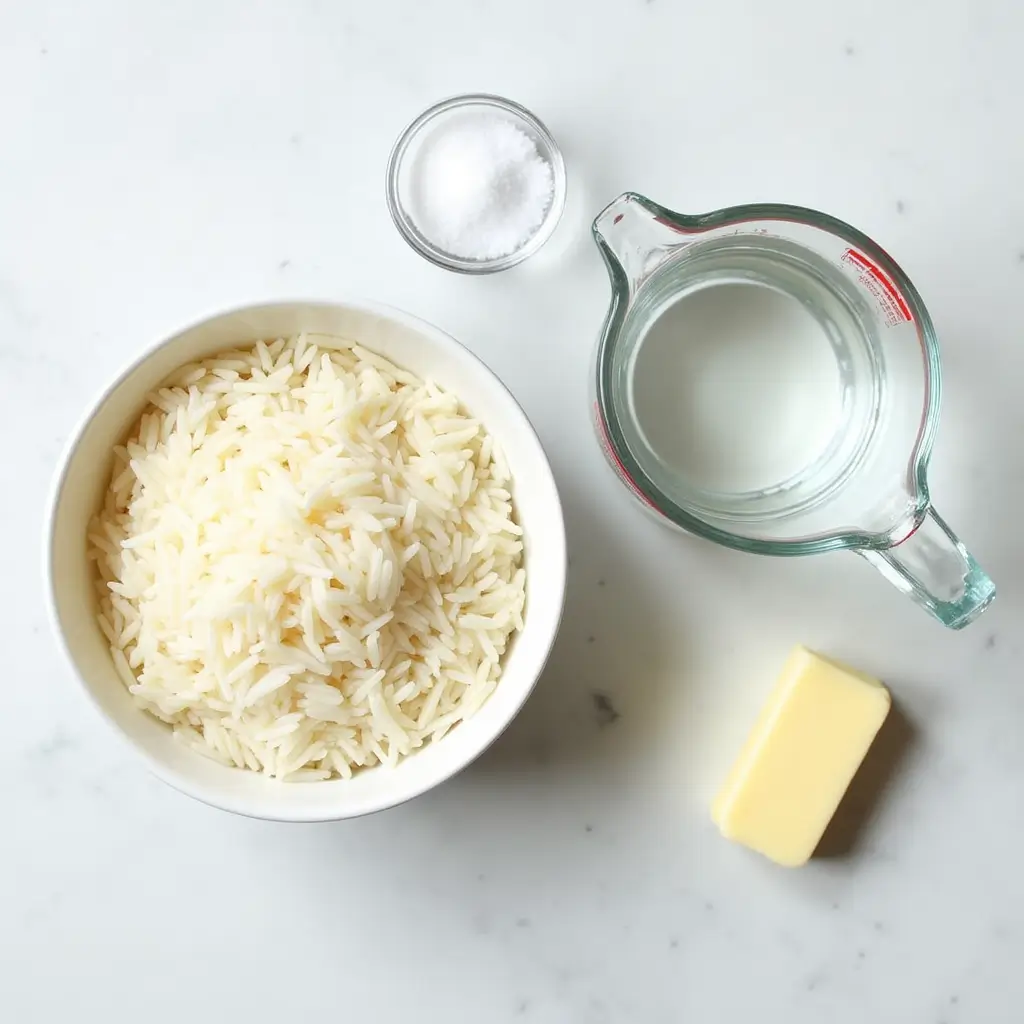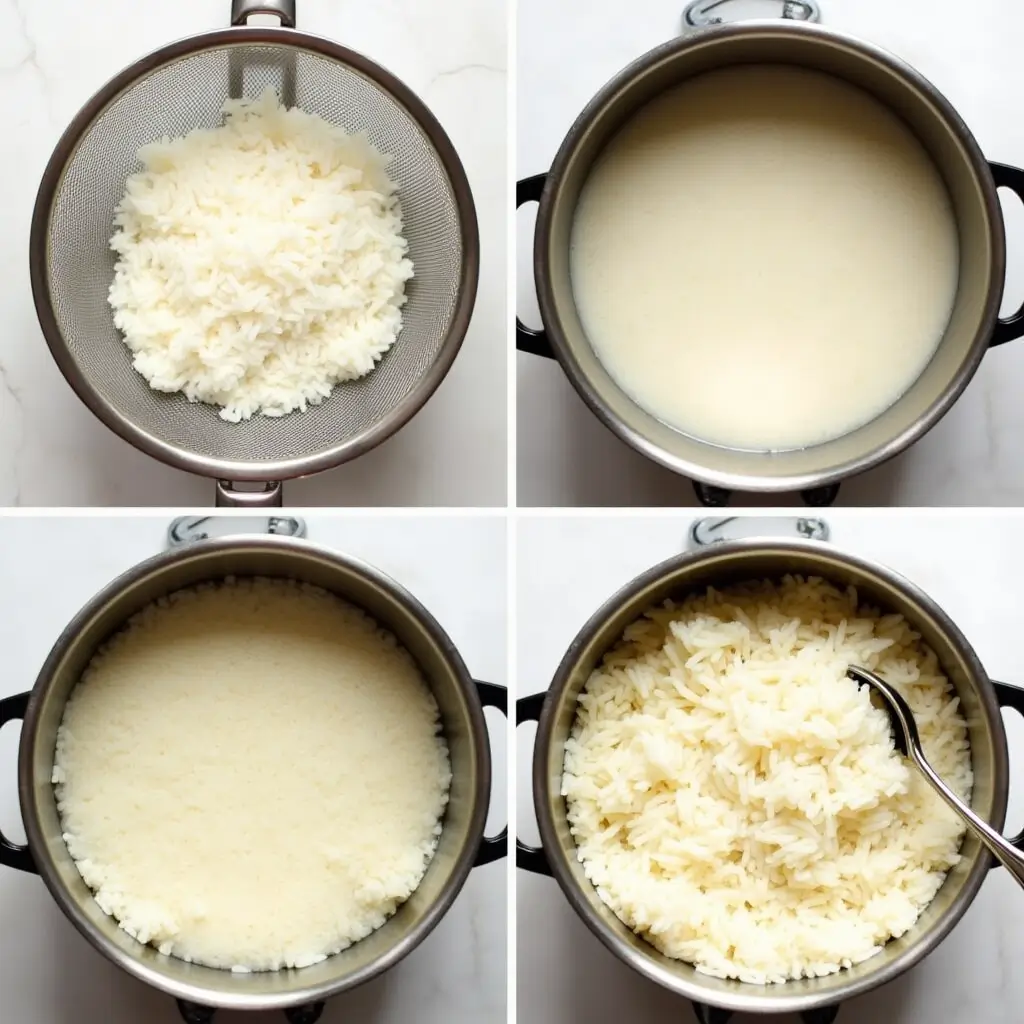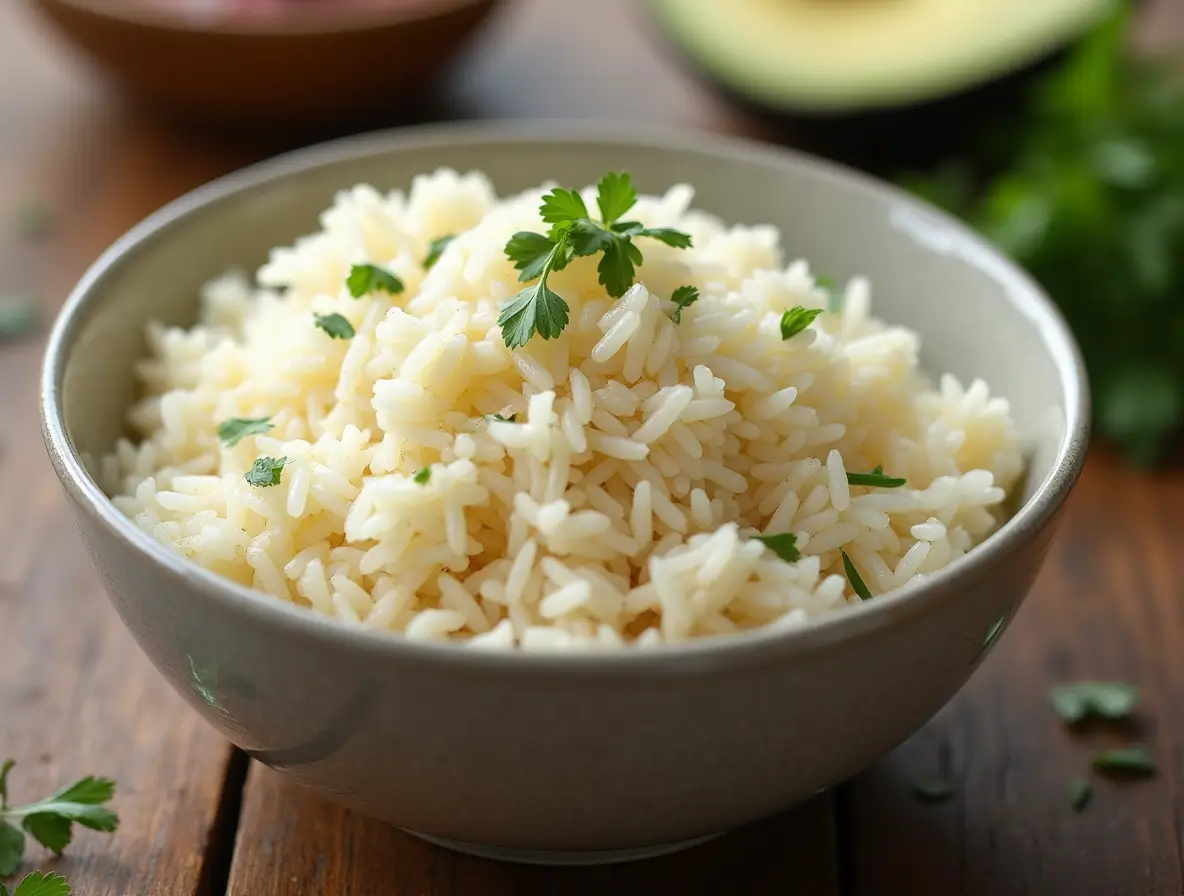Perfectly Fluffy Basmati Rice: The Ultimate Guide
Table of Contents
There’s something truly magical about a perfectly cooked pot of basmati rice—those long, elegant grains standing distinct yet tender, releasing their characteristic nutty aroma that fills your kitchen with warmth. If you’ve ever found yourself disappointed with sticky, mushy, or undercooked rice, you’re about to discover the secrets to basmati perfection! This foolproof method will transform your rice game forever, elevating even the simplest meals to restaurant quality. Many home cooks struggle with rice, but once you master these techniques, you’ll wonder why it ever seemed challenging.
Growing up, my grandmother would always say that you could judge a good cook by their rice—and basmati rice, with its delicate structure and aromatic properties, is truly the crown jewel of rice varieties. Originally from the foothills of the Himalayas, this premium grain has graced royal tables for centuries and now deserves a place of honor in your cooking repertoire.
What makes this method special is its reliability. Unlike my popular Instant Pot Biryani recipe that many of you have loved, this stovetop method gives you complete control over the cooking process, allowing you to achieve that perfect texture every single time. The best part? It requires minimal ingredients but delivers maximum flavor. Ready to transform your everyday meals with this staple that complements virtually any cuisine? Let’s get cooking!
What is Basmati Rice?
Ah, Basmati rice—the aristocrat of the rice world! Ever wondered why this particular variety commands such reverence in kitchens across the globe? The name “Basmati” actually comes from the Sanskrit word “vasmati,” meaning “fragrant,” and fragrant it certainly is! When properly cooked, it releases an intoxicating nutty aroma that can make anyone’s stomach rumble in anticipation. Have you noticed how the grains seem to dance away from each other rather than clumping together? That’s the magic of basmati! My grandfather always joked that basmati rice was proof that “the way to a man’s heart is through his stomach”—especially when that stomach is treated to these aromatic, perfectly separate grains. Don’t wait for a special occasion—your Tuesday dinner deserves this upgrade too!
Why You’ll Love This Basmati Rice Recipe:
This basmati rice recipe will quickly become your kitchen staple for three compelling reasons. First and foremost, the texture is absolutely unparalleled—each grain remains separate, tender, and elegantly elongated after cooking, providing that authentic restaurant-quality experience that’s often difficult to achieve at home. The grains don’t clump or stick together but maintain their distinct character while absorbing the flavors you pair them with.
Second, making basmati rice at home is incredibly cost-effective compared to takeout options. A single bag of quality basmati can provide numerous meals for your family, costing just pennies per serving. This economical aspect doesn’t compromise quality—in fact, freshly cooked basmati at home often surpasses what you’d get from restaurants in terms of freshness and customization options.
Finally, the versatility of this recipe allows for endless flavor adaptations. Whether you choose to enhance it with fragrant spices like cardamom, cinnamon, and cloves for an aromatic pilaf, or keep it simple with just a touch of butter and salt to complement saucy dishes, this basmati rice provides the perfect foundation. Unlike my coconut rice recipe which has a specific flavor profile, this classic basmati preparation works harmoniously with virtually any cuisine from Indian and Middle Eastern to Mediterranean and beyond. Why not make a larger batch today and discover how this simple staple can elevate your meals throughout the week?
How to Make Basmati Rice:
Quick Overview
This foolproof basmati rice recipe delivers perfectly fluffy, fragrant grains with each grain remaining separate and intact—never sticky or mushy. What makes this method special is the proper soaking and rinsing techniques, which remove excess starch and allow the rice to cook evenly. From start to finish, you’ll need about 30 minutes, though much of that is hands-off cooking time, making this an effortless side dish for even your busiest weeknights.
Key Ingredients for Basmati Rice:

- 2 cups high-quality basmati rice
- 3 cups water
- 1 tablespoon butter or ghee (optional)
- 1 teaspoon salt
- 1 bay leaf (optional)
- 1 cinnamon stick (optional)
- 2-3 cardamom pods (optional)
- 1 teaspoon oil
Step-by-Step Instructions:
- Measure and rinse the rice: Start by measuring 2 cups of basmati rice into a large bowl. Rinse the rice thoroughly under cold running water, gently swirling with your fingers. Continue rinsing until the water runs clear—this usually takes 4-5 changes of water. This crucial step removes excess starch that would otherwise make your rice sticky.
- Soak the rice: After rinsing, cover the rice with cold water and let it soak for 15-30 minutes. This soaking period allows the grains to absorb water evenly, resulting in perfectly cooked rice with distinct grains. If you’re short on time, even a 10-minute soak will improve your results.
- Drain thoroughly: After soaking, drain the rice completely using a fine-mesh sieve, shaking gently to remove excess water. Let it sit in the sieve for a minute or two to ensure all excess moisture drains away.
- Prepare your pot: Choose a medium-sized heavy-bottomed pot with a tight-fitting lid. Add 1 teaspoon of oil and 1 tablespoon of butter or ghee (if using) and melt over medium heat. If using aromatic spices like bay leaf, cinnamon stick, or cardamom pods, add them now and sauté for 30 seconds until fragrant.
- Toast the rice: Add the drained rice to the pot and gently stir to coat each grain with the fat. Toast the rice for about 1-2 minutes, stirring occasionally—this develops a nutty flavor and helps keep the grains separate.
- Add water and salt: Pour in 3 cups of water (the ratio is 1.5 cups water to 1 cup rice) and add 1 teaspoon of salt. Give everything a gentle stir, then bring the mixture to a rolling boil over medium-high heat.
- Reduce heat and cover: Once the water is boiling vigorously, reduce the heat to the lowest setting, cover the pot with the tight-fitting lid, and let the rice simmer undisturbed for exactly 15 minutes. Resist the urge to peek or stir!
- Steam and rest: After 15 minutes, turn off the heat completely but keep the lid on. Let the rice rest and continue steaming in the residual heat for an additional 10 minutes. This final resting period allows moisture to distribute evenly throughout the grains.
- Fluff and serve: Finally, remove the lid and gently fluff the rice with a fork (not a spoon, which can break the grains). Remove any whole spices before serving your perfectly cooked basmati rice.

What to Serve Basmati Rice With:
Basmati rice pairs beautifully with a wide variety of dishes across multiple cuisines. For an authentic Indian experience, serve it alongside butter chicken, chana masala, or any rich, saucy curry that allows the rice to soak up those complex flavors. The distinct grains provide the perfect vehicle for capturing sauces.
For Middle Eastern flair, pair your basmati rice with grilled kebabs, roasted vegetables, and a dollop of cooling yogurt sauce. The subtle nuttiness of the rice complements the bold, spiced flavors typical of this cuisine.
If you’re preparing a simpler meal, basmati rice transforms even basic stir-fries or steamed vegetables into a complete, satisfying dinner. For an elegant touch, try topping your rice with toasted nuts, dried fruits, or fresh herbs like cilantro or mint before serving.
For beverages, consider serving mango lassi, iced tea with mint, or a light beverage that won’t overpower the delicate flavors of the rice but will refresh the palate between bites.
Top Tips for Perfecting Basmati Rice:
For truly exceptional basmati rice, quality matters—seek out aged basmati rice, which has a more pronounced aroma and better cooking properties than newer harvests. Look for rice labeled as “aged” or “extra-long grain” for best results. The grains should be long, slender, and slightly ivory rather than pure white.
Don’t skip the soaking step, even if you’re pressed for time. Even a 10-minute soak significantly improves texture, but extending to 30 minutes yields even better results. This hydration period is crucial for helping the rice cook evenly from the inside out.
For added flavor dimensions, try these variations: substitute chicken or vegetable broth for water; add a squeeze of lemon juice and zest when fluffing; or stir in fresh herbs like cilantro, mint, or dill before serving. A common mistake is lifting the lid during cooking—this releases essential steam and disrupts the cooking process, potentially resulting in unevenly cooked rice.
If your rice consistently turns out too firm, you may need to adjust for altitude—higher elevations require slightly more liquid and longer cooking times. Conversely, if your rice tends to be mushy, reduce your liquid by about ¼ cup next time.
Storing and Reheating Tips:
Properly stored basmati rice maintains its wonderful texture and flavor for several days, making it perfect for meal prep. Allow any leftover rice to cool completely before transferring it to airtight containers. Refrigerated rice stays fresh for up to 5 days, but for optimal quality, try to consume it within 3 days when the texture and flavor are still at their best.
For longer storage, basmati rice freezes beautifully. Portion cooled rice into freezer-safe bags or containers, press out excess air, and freeze for up to 3 months. Label with the date to keep track of freshness. To prevent freezer burn, consider wrapping individual portions in plastic wrap before placing them in freezer bags.
When reheating refrigerated rice, sprinkle a few drops of water over the top before microwaving covered for 1-2 minutes, stirring halfway through. This reintroduces moisture lost during refrigeration. Alternatively, reheat in a covered skillet with a tablespoon of water or broth over medium-low heat, gently breaking up any clumps with a fork.
For frozen rice, thaw overnight in the refrigerator for best results, or use the defrost setting on your microwave before reheating as directed above. Never refreeze previously frozen rice, and always ensure reheated rice reaches a steaming hot temperature throughout to ensure food safety.

